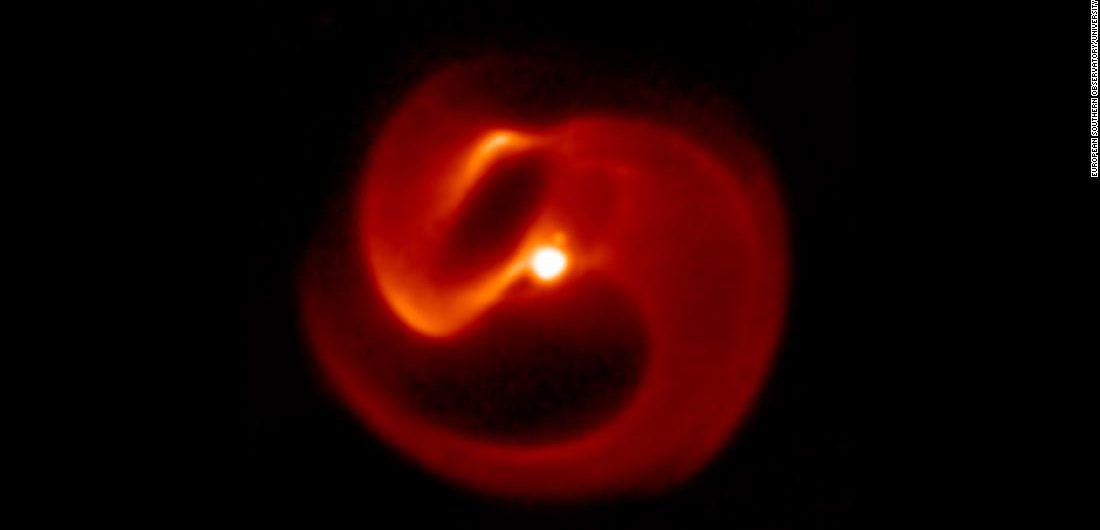(CNN)The most up to date picture from the Spitzer Space Telescope resembles a vast pumpkin cut up without a moment to spare for Halloween. Specialists have named this area on the edge of our cosmic system, the Milky Way, as the “Jack-o’- lamp Nebula,” as per NASA.
Fittingly, this space pumpkin was cut up by a star. The O-type star is gigantic, saying something between 15 to multiple times heavier than our sun.
In the cloud, the star’s radiation pushed residue and gas outward, making holes that resemble a ghoulish pumpkin cutting.
The star demonstrations like the light enlightening the jack-o’- lamp and was spotted by the Spitzer Space Telescope, which distinguishes light in infrared. On account of this picture, it contains three distinct wavelengths of infrared light.
The green and red hues in the picture are because of the various temperatures of the residue caught by Spitzer. The mixing of these two lights makes yellow. The stars are connoted as blue and the splendid white spot is the star.
In a higher-differentiate picture, in any case, the orange and green make an orange tone ideal for Halloween.
The pictures are a piece of a bigger investigation of the Milky Way’s external locale, where billows of gas and residue are colder and contain less substantial components. Specialists have broke down star development in this area to decide how star and planet arrangement contrasts and different locales of the Milky Way.
Before, Spitzer has looked into the universe and caught locales avoided our view, for example, the focuses of cosmic systems and dusty zones where stars are conceived and planetary frameworks structure.
The Spitzer Space Telescope is in NASA’s Great Observatories family. Spitzer recognizes infrared light, while the Hubble Space Telescope catches obvious and UV light; the Compton Gamma Ray Observatory was intended for gamma beams; and the Chandra X-beam Observatory sees X-beams.
A series of articles in “Linlithgowshire Journal & Gazette” interviewing some of the oldest inhabitants of We…
Disclaimer: The views, suggestions, and opinions expressed here are the sole responsibility of the experts. No People Reportage journalist was involved in the writing and production of this article.





